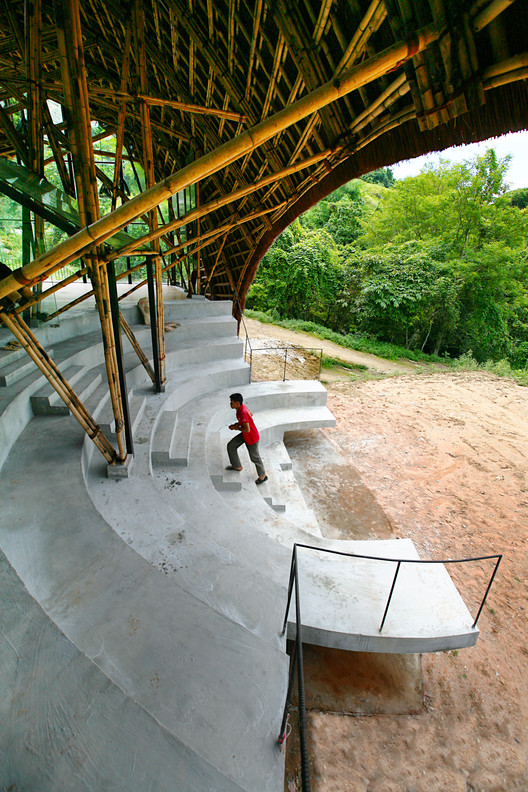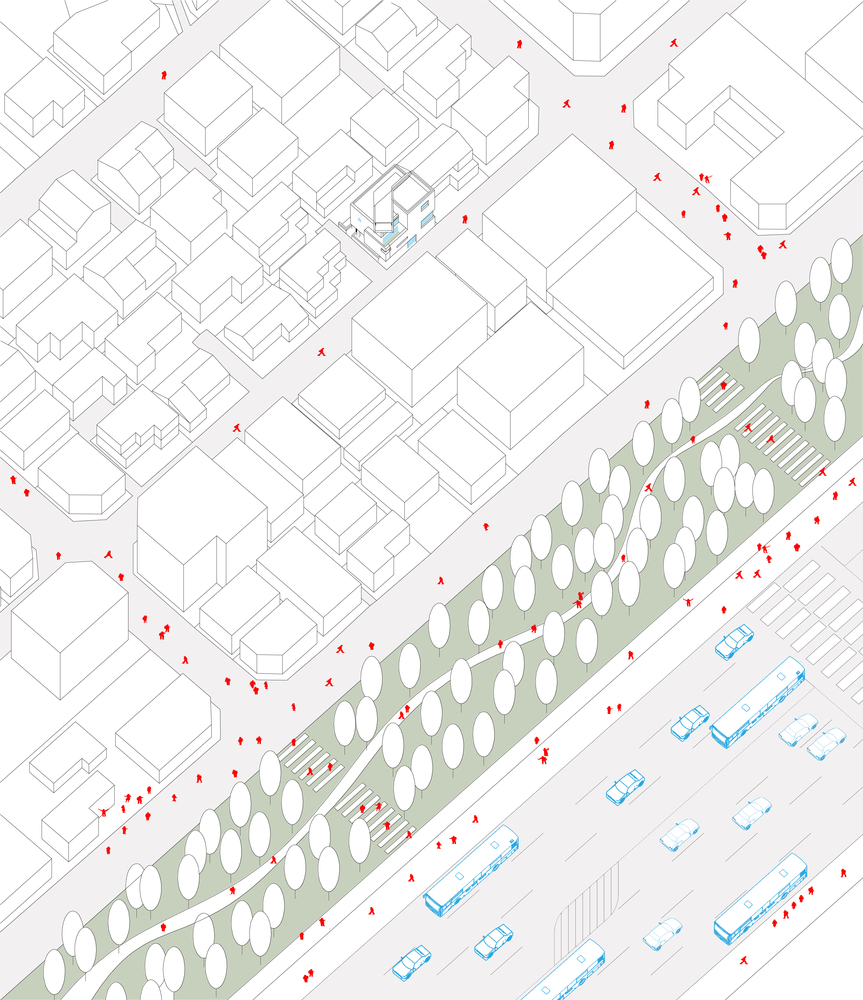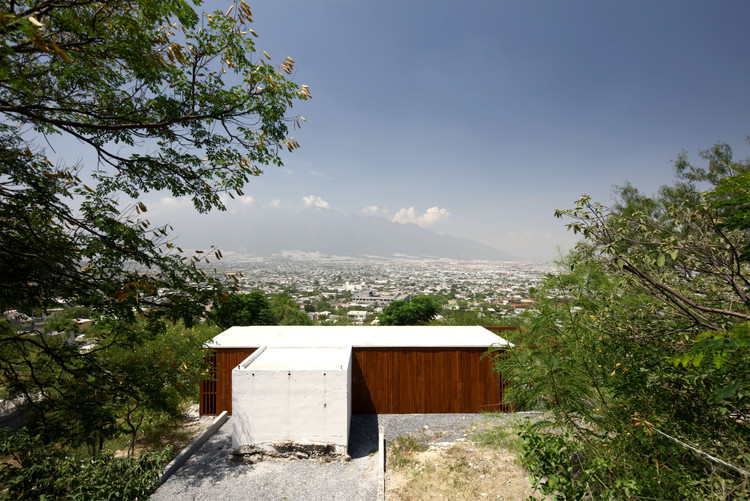the bi city biennale of urbanismarchitecture 2013 rethinks chinas industrial past
2013-12-09 14:47
The fifth edition of the Bi-City Biennale of Urbanism/Architecture has opened its doors in Shenzhen. It is being hosted across two different venues: a former glass factory and an old warehouse at the city's industrial port
深圳蛇口工业区似乎不太可能是专门设计双年展的地方。但考虑到这次活动的“城市边界”主题,这个工业港口实际上是完美的-字面上和象征性地-在双城市双年展/建筑(Uabb)举办一场关于全球城市问题的精彩辩论。“城市设计双年展”第五版在两个不同的地点展出:一座位于该市工业港的旧仓库;另一座位于广东浮法玻璃厂的旧仓库,这是一次短途的公共汽车旅行。
他说,我们没什么可做的。“这一切都是为了珍惜它现有的美丽和品质。”
展出的是芬兰建筑部、纽约现代艺术馆、OMA、深圳设计中心和维多利亚的作品。
同时,仓库展览也致力于“跨越城市边界”。策展人李祥宁和杰弗里·约翰逊平衡了国际和当地建筑师、城市学家、社会学家和艺术家的多元视角的折衷但连贯的组合。值得注意的亮点包括Atelier Bow-Wow的电影“东京制造”,讲述了如何创造和使用连贯的城市环境。
圣马丁中心的一个团队正在放映四部名为“液体边界”的电影,这些电影对传统空间制作中的刚性边界提出了质疑。
Het Nieuwe Instituut‘Sander Veenhof的安装“由我们制造”,使用增强现实技术帮助观众与他们的建筑遗产联系起来。通过信息可视化专家Markvandernet,云工厂展示了数据研究如何能够帮助人们在实时数字信息的基础上做出明智的决策。
开幕式周末的亮点无疑是弹出,StudioX深圳生动地介绍了从东京到里约热内卢到中国的城市项目。互动空间,由香港建筑师Marisa Yiu策划,由海的移动钢棒悬挂在天花板网格表,让游客在变换空间的一个实时交流建立一个架构。
Curator and creative director Ole Bouman enlisted a team of local and international designers to transform a four-hectare derelict industrial site into the biennale's main venue. Courtesy of Shenzhen Biennale of Urbanism/Architecture Organising Committee. Photography: Zeus Photography
The curator wanted to retain the factory's horizontality, so the short walls at centre were painted black, with a strip of low lighting along the balustrades. Courtesy of Shenzhen Biennale of Urbanism/Architecture Organising Committee. Photography: Zeus Photography
A highlight of the opening weekend was POP-UP, Studio-X Shenzhen’s lively presentation of inspiring urban projects from Tokyo, to Rio de Janeiro to China. Courtesy of Studio X Shenzhen
Orchestrated by Hong Kong-based architect Marisa Yiu, the interactive space comprised a sea of tables suspended from a ceiling grid by moveable steel rods and an arrangement of stools. Courtesy of Studio X Shenzhen
OMA presented a prelude to the Venice Architecture Biennale next year with two extended workshops. The first will translate the 'Yingzao Fashi', a construction manual for how to build a traditional Chinese roof written during the Song Dynasty. The second workshop will explore how the text can be explained in an exhibition and students will execute their designs into products
'The Tricycle House', an installation by People's Architecture, is a human-powered house that operates off the grid
Impressive architectural features, such as this dramatic Guggenheim-esque spiral staircase, provided the perfect backdrop for urban experimentation. Courtesy of Shenzhen Biennale of Urbanism/Architecture Organising Committee. Photography: Zeus Photography
Outside, the 'Hong Kong Value Farm' was inspired by Hong Kong’s flourishing rooftop farms and the urban vernacular of its street markets. Courtesy of Shenzhen Biennale of Urbanism/Architecture Organising Committee. Photography: Zeus Photography
The factory has made space for events, talks and gatherings for the duration of the biennale. Courtesy of Shenzhen Biennale of Urbanism/Architecture Organising Committee. Photography: Zeus Photography
The renovated factory includes a café for visitors and exhibitors
Elsewhere, the biennale team and participating architects transformed an old warehouse's interior to form a secondary venue for the fair
The warehouse, located at the city's Shekou Ferry Terminal, is a short bus ride away from its sister venue
The exhibitions here, curated by Li Xiangning and Jeffrey Johnson, are focused on 'crossing urban boundaries'. Courtesy of Shenzhen Biennale of Urbanism/Architecture Organising Committee. Photography: Zeus Photography
The Italian Pavilion exhibition, on display at the warehouse, investigates how social and economic change shaped the city of Venice
The Belgian Pavilion exhibition, curated by Iwan Strauven and Marie-Cecile Guyaux, is also on show at the warehouse. Titled 'XX Models: Young Belgian Architecture', it includes NU Architectuuratelier's study of a staircase in a former mining site
The installation 'Made by Us', by the Het Nieuwe Instituut's Sander Veenhof, uses augmented-reality technology to help connect viewers with their architectural heritage. © Monobanda
The 'Furniture for Public Use' project outside the warehouse entrance, by Rodrigo Escandón Cesarman, José Esparza Chong Cuy, Guillermo González Ceballos and Tania Osorio Harp, rethinks the use of sidewalks. The project allows anyone to transform their sidewalk into an 'active site of social interaction and better quality' turning walking into a civic experience
keywords:5th Bi-City Biennale of Urbanism/Architecture, urban design, china architecture, Shenzhen biennale, architecture festival, urbanism
关键词:第五城市双年展城市化/建筑设计城市设计深圳建筑双年展建筑节城市化
深圳蛇口工业区似乎并不可能成为一个专门设计的双年展。
但是考虑到事件的“城市边界”主题,这个工业港口实际上是完美地定位——字面和形象地——托管F...
 举报
举报
别默默的看了,快登录帮我评论一下吧!:)
注册
登录
更多评论
相关文章
-

描边风设计中,最容易犯的8种问题分析
2018年走过了四分之一,LOGO设计趋势也清晰了LOGO设计
-

描边风设计中,最容易犯的8种问题分析
2018年走过了四分之一,LOGO设计趋势也清晰了LOGO设计
-

描边风设计中,最容易犯的8种问题分析
2018年走过了四分之一,LOGO设计趋势也清晰了LOGO设计



































































